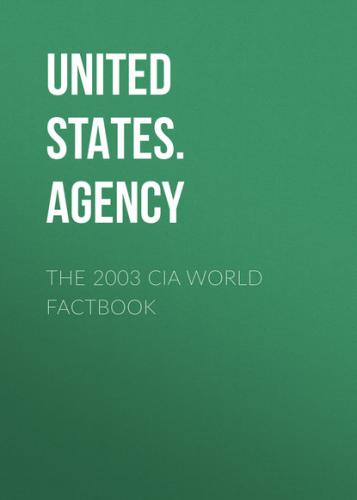Currency code:
XAF
Exchange rates:
Communaute Financiere Africaine francs (XAF) per US dollar - 696.99
(2002), 733.04 (2001), 711.98 (2000), 615.7 (1999), 589.95 (1998)
Fiscal year:
calendar year
Communications Gabon
Telephones - main lines in use:
39,000 (1998)
Telephones - mobile cellular:
120,000 (2000)
Telephone system:
general assessment: adequate service by African standards and
improving with the help of the growing mobile cell system
domestic: adequate system of cable, microwave radio relay,
tropospheric scatter, radiotelephone communication stations, and a
domestic satellite system with 12 earth stations
international: satellite earth stations - 3 Intelsat (Atlantic
Ocean); fiber optic submarine cable to be in service in 2002
Radio broadcast stations:
AM 6, FM 7 (and 11 repeaters), shortwave 4 (2001)
Radios:
208,000 (1997)
Television broadcast stations:
4 (plus four low-power repeaters) (2001)
Televisions:
63,000 (1997)
Internet country code:
.ga
Internet Service Providers (ISPs):
1 (2001)
Internet users:
18,000 (2002)
Transportation Gabon
Railways: total: 814 km standard gauge: 814 km 1.435-m gauge (2002)
Highways: total: 8,464 km paved: 838 km unpaved: 7,626 km (2000 est.)
Waterways:
1,600 km (perennially navigable)
Pipelines:
gas 210 km; oil 1,426 km; water 3 km (2003)
Ports and harbors:
Cap Lopez, Kango, Lambarene, Libreville, Mayumba, Owendo,
Port-Gentil
Airports:
57 (2002)
Airports - with paved runways: total: 10 over 3,047 m: 1 2,438 to 3,047 m: 1 1,524 to 2,437 m: 7 914 to 1,523 m: 1 (2002)
Airports - with unpaved runways: total: 47 1,524 to 2,437 m: 8 914 to 1,523 m: 15 under 914 m: 24 (2002)
Military Gabon
Military branches:
Army, Navy, Air Force, Presidential (Republican) Guard (charged
with protecting the president and other senior officials), National
Gendarmerie, National Police
Military manpower - military age:
20 years of age (2003 est.)
Military manpower - availability:
males age 15–49: 305,603 (2003 est.)
Military manpower - fit for military service:
males age 15–49: 158,226 (2003 est.)
Military manpower - reaching military age annually:
males: 12,853 (2003 est.)
Military expenditures - dollar figure:
$81.9 million (FY02)
Military expenditures - percent of GDP:
2% (FY02)
Transnational Issues Gabon
Disputes - international:
creation of a maritime boundary in hydrocarbon-rich Corisco Bay
with Equatorial Guinea is hampered by dispute over small islets on
Mbane/Mbagne bank, administered and occupied by Gabon since the 1970s
This page was last updated on 18 December, 2003
======================================================================
@Gambia, The
Introduction Gambia, The
Background:
The Gambia gained its independence from the UK in 1965; it formed a
short-lived federation of Senegambia with Senegal between 1982 and
1989. In 1991 the two nations signed a friendship and cooperation
treaty. A military coup in 1994 overthrew the president and banned
political activity, but a 1996 constitution and presidential
elections, followed by parliamentary balloting in 1997, completed a
nominal return to civilian rule. The country undertook another round
of presidential and legislative elections in late 2001 and early
2002.
Geography Gambia, The
Location:
Western Africa, bordering the North Atlantic Ocean and Senegal
Geographic coordinates:
13 28 N, 16 34 W
Map references:
Africa
Area:
total: 11,300 sq km
land: 10,000 sq km
water: 1,300 sq km
Area - comparative:
slightly less than twice the size of Delaware
Land boundaries: total: 740 km border countries: Senegal 740 km
Coastline: 80 km
Maritime claims: contiguous zone: 18 NM territorial sea: 12 NM continental shelf: not specified exclusive fishing zone: 200 NM
Climate:
tropical; hot, rainy season (June to November); cooler, dry season
(November to May)
Terrain:
flood plain of the Gambia River flanked by some low hills
Elevation extremes:
lowest point: Atlantic Ocean 0 m
highest point: unnamed location 53 m
Natural resources:
fish
Land use: arable land: 19.5% permanent crops: 0.5% other: 80% (1998 est.)
Irrigated land:
20 sq km (1998 est.)
Natural hazards:
drought (rainfall has dropped by 30% in the last 30 years)
Environment - current issues:
deforestation; desertification; water-borne diseases prevalent
Environment - international agreements:
party to: Biodiversity, Climate Change, Climate Change-Kyoto
Protocol, Desertification, Endangered Species, Hazardous Wastes, Law
of the Sea, Nuclear Test Ban, Ozone Layer Protection, Ship
Pollution,
